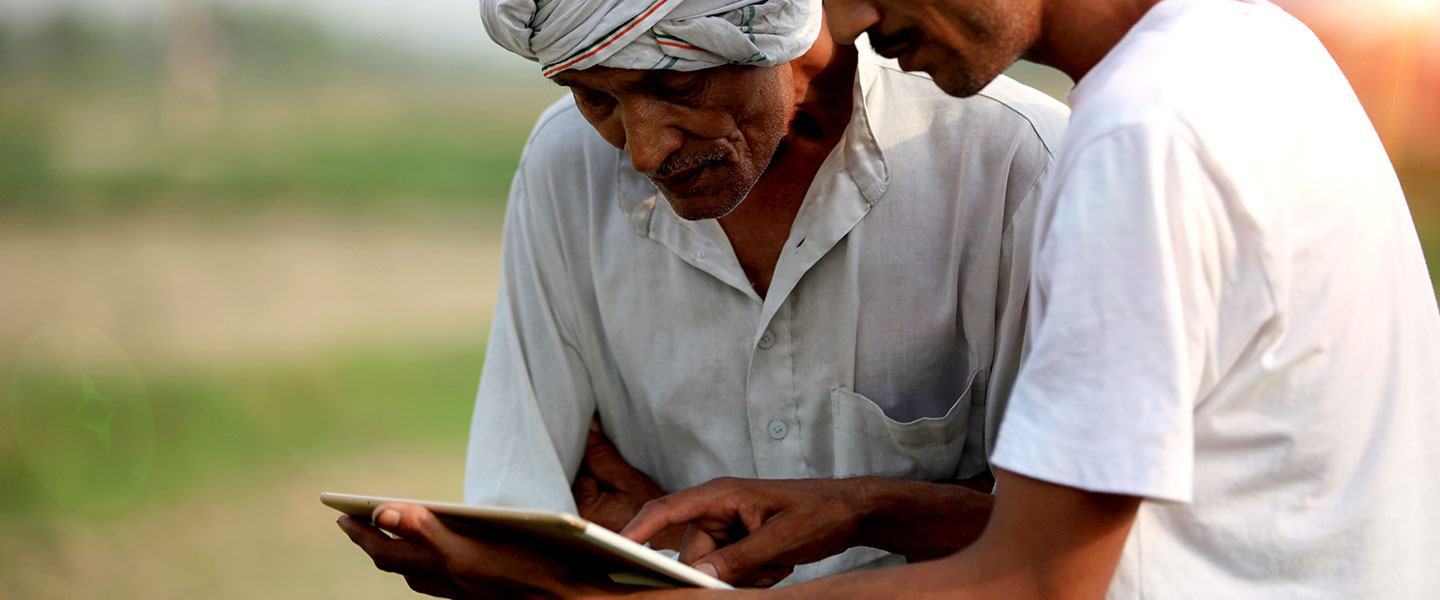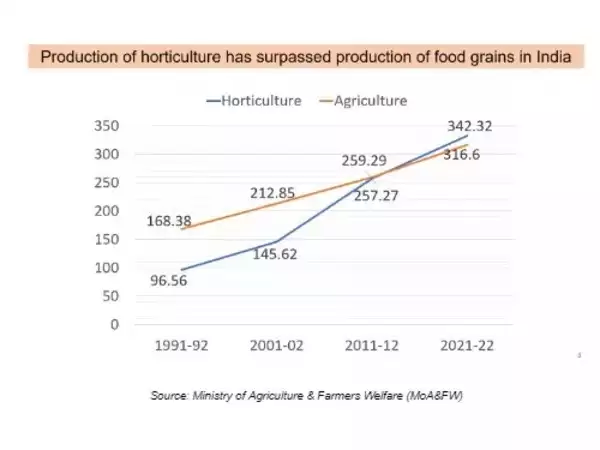-
Business Consulting
Our business consulting specialists offer a comprehensive blend of strategic advisory services. We assess the business, industry, operating model, synergy, skill sets and vision of the organisation and recommend the way forward
-
Digital Natives
Unlock growth with Grant Thornton Bharat's Digital Natives solutions. Customised support for tech-driven companies in healthcare, gaming, and more.
-
Digital Transformation Services
Grant Thornton’s digital transformation services help traditional businesses digitalise their business models with cloud technology, IoT consulting, app development and more DigiTech solutions.
-
Finance Transformation
Using a holistic approach, integrating digitalisation and digital transformation we help clients achieve transparency, control, governance, and faster decision making through real-time data within the business.
-
Human Capital Consulting
Our Human Capital Consulting team harnesses technology and industry expertise to assist in constructing adaptable organisations with transparency, fostering productive and value-driven workforces, and inspiring employees to engage meaningfully in their tasks.
-
Production Linked Incentive Scheme
Production-linked Incentive Scheme by the Indian government is aimed at boosting manufacturing. Grant Thornton Bharat offers varied services across sectors to help businesses avail of this scheme.
-
Public Sector Advisory
Our Public Sector Advisory team has focused streams, aligned with the core priorities of the Government of India. We are responsible for providing innovative and customized technical and managerial solutions.
-
Tech Advisory
We have amalgamated Digital Transformation, IT Advisory & Information Management and Analytics into a new offering, DigiTech.

-
Direct Tax services
Our tax specialists offer a comprehensive blend of tax services, tax litigation, regulatory and compliance services, helping you navigate through complex business matters.
-
Indirect Tax Services
Get tax services by leading tax firm Grant Thornton India. Our indirect tax services include consulting, compliance and litigation services for corporate, international and transaction tax
-
Transfer pricing services
Our transfer pricing services experts provide a range of services from provision of APA services to handling large global assignments including Country by Country reporting.
-
US Tax
At Grant Thornton, we help individuals and dynamic companies deal with US tax laws, which are one of the most complicated tax legislations across the world.
-
Financial Services - Tax
Best financial advisory services, tailored for small and large businesses by the experts having comprehensive knowledge of domestic laws and access to multifaceted tools to provide a valuable results.
-
Financial Reporting consulting services
Our experts have significant hands-on experience in providing IFRS/US GAAP services, end-to-end solutions and support services to fulfil financial reporting requirements.
-
Fund accounting and financial reporting
International operations often lack standardisation and have varied local reporting formats and requirements. Our experts can offer proactive insights, practical guidance, and positive progress and help meet regulatory timeframes.
-
Compliance and Secretarial Services
Our experts can assist in overhauling the entire compliance machinery of the organisation through evaluation of the applicable statutory obligations, monitoring of adequate governance controls, reporting and providing ongoing support.
-
Global People Solutions
As businesses transcend borders, both domestic and global considerations need equal attention. Our interim CFO and financial controller support services help organisations meet the business vision.
-
Finance and accounting outsourcing
Our accounting experts assist organisations in managing their accounting and reporting. Our dedicated Integrated Knowledge and Capability Centre (IKCC), allows us to service both the domestic and global markets efficiently and cost-effectively
-
Compliance Management System
We have automation solutions for you that will allow meeting government requirements and remain diligent, which when failed, can lead to penalties and loss in revenue.
-
Global compliance and reporting solutions
At Grant Thornton Bharat, we meet the challenges of our clients and help them unlock their potential for growth. Our professionals offer solutions tailored to meet our clients’ global accounting and statutory reporting requirements. With first-hand experience of local reporting requirements in more than 145+ locations worldwide, we provide seamless and consistent international service delivery through a single point of contact.
-
Related-party transaction governance
Related-party transactions (RPTs) are common in business structures where organisations engage with their group entities, such as holding companies, subsidiaries, associate concerns, joint ventures, or key management personnel, for various operational or financial purposes.
-
Family Offices & Private Client Services
Grant Thornton Bharat Private Client Services offers tailored advisory for family-owned businesses, focusing on governance, compliance, tax, succession planning, and family office structuring to sustain wealth and preserve legacies across generations.
-
GTMitra: Tax & Regulatory Tool
GTMitra, a specialised tax and regulatory tool by Grant Thornton Bharat, supports multinational businesses in understanding laws and regulations for effective growth strategies.
-
Labour codes
Labour codes solutions help you transition through the new legislation. At Grant Thornton, we help businesses divide their approach to make sure a smooth transition.
-
Alerts
At Grant Thornton India, with the help of our tax alerts, we help to provide updates on how to minimise your tax exposure and risks.
-
Unlocking opportunities: India investment roadmap
The India Investment Roadmap resource is designed to navigate the complexities of Indian tax and regulatory laws, providing seamless guidance and a comprehensive set of solutions to ensure a smooth process for investors aiming to establish or expand their presence in India.
-
CFO Solutions
Our comprehensive suite of solutions for CFOs

-
Cyber
In today’s time, businesses have gone through large transformation initiatives such as adoption of digital technologies, transition to cloud, use of advanced technologies et al.
-
Risk Optimisation
Our Governance, Risk and Operations (GRO) services encompass Internal Audit, Enterprise Risk Management, Internal Financial Controls, IT advisory, Standard Operating Procedures and other services.
-
Risk analytics
Grant Thornton Bharat’s CLEARR Insights is a state-of-the art data analytics platform that will help you in seamless data analysis and efficient decision-making.
-
Forensic & Investigation Services
The team of forensic advisory services experts consists of the best intelligence corporate experts, and fraud risk, computer forensic experts to deliver most effective solutions to dynamic Indian businesses.
-
Digital Forensics and Incident Response (DFIR)
Strengthen cyber resilience with proactive forensic audits
-
ESG consulting
Grant Thornton Bharat offers holistic ESG consulting solutions for sustainable business outcomes. With industry expertise and AI technology, we drive long-term value.

-
Transaction Tax Services
Our transaction tax experts understand your business, anticipate your needs and come up with robust tax solutions that help you achieve business objectives ensuring compliance and efficiency
-
Deal Advisory
Unlike other M&A advisory firm in India, we offer deal advisory services and work exclusively with controlled and well-designed strategies to help businesses grow, expand and create value.
-
Due Diligence
Grant Thornton’s financial due diligence services are aimed at corporate looking for mergers and acquisitions, private equity firms evaluating investments and businesses/promoters considering sale/divestment.
-
Valuations
As one of the leading valuation consultants in India, Grant Thornton specializes in all the aspects of the process like business valuation services, financial reporting, tax issues, etc.
-
Overseas Listing
Overseas listing presents a perfect platform for mid-sized Indian companies with global ambitions. Grant Thornton’s team of experts in listings, work closely with clients during all stages.
-
Debt & Special Situations Solutions
Grant Thornton Bharat offers specialist debt and special situations consulting services, including restructuring, insolvency, and asset tracing solutions.
-
Financial Reporting Advisory Services
Grant Thornton Bharat Financial Reporting Advisory Services offer end-to-end solutions for complex financial requirements, including GAAP conversions, IPO support, and hedge accounting advisory, ensuring accurate financial reporting and compliance.
-
Financial Statement Audit and Attestation Services
Grant Thornton Bharat offers customised financial statement audit and attestation services, ensuring impeccable quality and compliance with global standards. Our partner-led approach, technical expertise, and market credibility ensure effective solutions for your business needs.

- Agriculture
- Asset management
- Automotive and EV
- Aviation
- Banking
- Education and ed-tech
- Energy & Renewables
- Engineering & industrial products
- Fintech
- FMCG & consumer goods
- Food processing
- Gaming
- Healthcare
- Urban infrastructure
- Insurance
- Media
- Medical devices
- Metals & Mining
- NBFC
- Pharma, bio tech & life sciences
- Real estate and REITs
- Retail & E-commerce
- Specialty chemicals
- Sports
- Technology
- Telecom
- Transportation & logistics
- Tourism & hospitality
-
 Thought leadership Co-lending in India: Expanding credit access for MSMEsIn today’s rapidly evolving financial landscape, co-lending has emerged as a key enabler of credit expansion in India, facilitating partnerships between banks and non-banking financial companies (NBFCs) to extend credit more efficiently to underserved segments.
Thought leadership Co-lending in India: Expanding credit access for MSMEsIn today’s rapidly evolving financial landscape, co-lending has emerged as a key enabler of credit expansion in India, facilitating partnerships between banks and non-banking financial companies (NBFCs) to extend credit more efficiently to underserved segments. -
 Article Why India’s financial inclusion journey needs to focus on equity and access to creditFinancial services have expanded over a decade, giving millions access to bank accounts and digital payments. But true empowerment needs to reach every corner of the country if growth is to be long-term and sustained
Article Why India’s financial inclusion journey needs to focus on equity and access to creditFinancial services have expanded over a decade, giving millions access to bank accounts and digital payments. But true empowerment needs to reach every corner of the country if growth is to be long-term and sustained -
 Thought Leadership Competitive and sustainable agriculture & food processing in KeralaThe economy of Kerala is primarily driven by the services sector, which contributes 66% to the Gross State Domestic Product (GSDP).
Thought Leadership Competitive and sustainable agriculture & food processing in KeralaThe economy of Kerala is primarily driven by the services sector, which contributes 66% to the Gross State Domestic Product (GSDP). -
 Article Economic Survey 2024-25: Deregulation, investment and innovation for a Viksit BharatIndia's economic growth remains for a steady trajectory with real GDP expected to grow at 6.4% in FY25 and in the range of 6.3%-6.8% in FY26, reflecting resilience despite global uncertainties.
Article Economic Survey 2024-25: Deregulation, investment and innovation for a Viksit BharatIndia's economic growth remains for a steady trajectory with real GDP expected to grow at 6.4% in FY25 and in the range of 6.3%-6.8% in FY26, reflecting resilience despite global uncertainties.
-
India-UK
India-UK

The agriculture & allied sector is one of the most pivotal sectors of the Indian economy.
Finance Minister Nirmala Sitaraman will be in the spotlight once again as she presents the Union Budget 2023-24 on February 1st, 2023. The expectations of the agriculture & allied sector from this Budget are high and varied. The stakeholders within the sector are hopeful of upscaling of ongoing interventions as well as enhanced plans on integrated interventions.
The agriculture & allied sector is one of the most pivotal sectors of the Indian economy.
The sector comprises over 14 Cr farmers and provides livelihood to almost half the Indian population. Despite shocks from the pandemic, the sector registered strong growth in the recent years. As a matter of fact, over the last few years, despite the pandemic, Russia-Ukraine war and the sectoral shifts, agriculture has been the only sector to display a constant growth. Despite the supply chain disruption due to the aforementioned crises, the sector has shown strong resilience to external hindrances. This is in sync with Hon’ble Prime Minister’s vision of ‘Atmanirbhar Bharat’ or ‘Self Sufficient India’.
In the year 2021-22, the agriculture & allied sector contributed 18.8% to the Gross Value Added (GVA) of the country with a registered growth of almost 4% in the same year. Apart from this, within the Agri and Allied sectors, the growth rate for horticulture, food grains and fisheries are 6%, 5% and 10% respectively. Notable the ‘diversification’ within the sub-sectors has also been a recent trend.
Today, India is the 2nd largest producer of the of the Fruits & Vegetables, with a huge potential in the export of the same. Horticulture contributes to nearly 1/3rd of the agricultural economy, due to the rising demand for nutrition, quality foods and fruits and vegetables from all around the world.
As horticulture production in the country surpasses agriculture production, the shift towards a more integrated perspective is warranted. The increase in demand, largely propelled by urban areas, for fresh and processed foods along with growing institutional support for the digitization of agriculture sheds light on the shifting circumstances within the sector.

Nevertheless, India is yet to adequately adopt an integrated approach and penetrate global markets adequately. In many horticultural commodities are protected by customs tariffs in the tune of 40% and the country enjoys at best “second competitive advantage”. For instance, despite being the top producer of Bananas in the world, India still accounts for a mere 2% of the global market share in the banana exports. On the other hand, Ecuador, the country ranking 4th in the production of banana accounts for around 25% of world exports.
Despite all the initiatives of the Govt., a small/marginal farmer in Anantapur, Andhra Pradesh, the top banana producing district in India, is still facing the various constraints and gaps in the value chain. Event with the volume, the means and also the support of the government, farmers are struggling to secure a market for better and stable renumeration; they also suffer from the lack of quality planting material, poor quality and conformance absence of developed sea protocols, non-tariff barriers in markets abroad, infrastructure constraints etc. In order to address the problems in the value chain, there is a dire need for an integrated approach that can identify the gaps of entire value chain as well as plug the same by establishing a convergence between not only of all the relevant programmes and departments, but also a PPP approach between the government and the private sector.
The recent programmes of government of India, including the Horticulture Cluster Development Programme (CDP) is one such approach, as it leverages the geographical specialization in horticulture clusters and fosters the integrated and market-led development of horticulture focusing upon a range of value chain activities including pre-production and production, post-harvest infrastructure and value addition, as well as logistics, marketing and branding. Grant Thornton Bharat LLP has been working as the Programme Management Unit (PMU) in this specific initiative. The programme has a unique approach to strengthen the entire value chain, i.e., enabling synergies and convergence among all stakeholders. The programme’s implementation structure encourages the participation of the state government while also bringing in the private sector investment into the clusters.
Launched under the umbrella of National Horticulture Board, the programme is being implemented as a Pilot initially in 12 identified clusters and will be scaled up to cover all identified 55 clusters based on the learnings from this pilot. Upon successful implementation of the programme in all clusters, the overall outcome is envisaged by way of benefiting around 1 million farmers, leveraging a total estimated investment of Rs 10,000 crore, and enabling an increase in exports of the targeted crops by 20 percent.
Such unique and integrated programme is the need of the hour. Hence the forthcoming budget should bring in programmes which consider the entire value chain, promote participation across value chain activities, laying a foundation for the future of Indian Agriculture wherein cluster brands, clean planting material, traceability and conformance etc. will be shaping the performance of the sector.
A recent report by the United Nations posited India to become the most populous nation in the world by 2023. This increasing population especially in urban areas, is driving the increase in demand for fresh quality agriculture, horticulture, livestock and fisheries produce. The push from this increased demand has been met with record production numbers in the horticulture sector and a steady growth within horticultural exports as well.
However, to ensure that this growth is sustainable in nature, the focus of policy making needs to be forward looking. Increased focus on adoption of globally proven ideas such as the cluster-based model of cultivation, value-chain based support for advanced technology adoption and encouraging quality and conformance at the farm level are some areas in which stakeholders expect a specific focus in the upcoming Budget 2023.
This article was originally published on The Times of India.